|
The streets of Hanoi’s Old Quarter, the city's tourism center, are dark and virtually deserted at 05:00 AM. The peaceful predawn darkness is a good time to get out and get some exercise, because by 09:00 the summer sun will be scorching the soon-to-be crowded and chaotic streets.
I am on my way to the Long Biên market, a huge wholesale “wet market” that specializes in fruit, vegetables, seafood and much more. This is one of Hanoi’s largest markets; most visitors dinning in this city will surely have eaten food that passed through here. It is not a tourist destination per se, but on most mornings I encounter a handful of travelers with cameras wondering through the busy maze of stalls. The market is fantastic place to take pictures, meet the locals and see how they start their days.
My goal is to arrive at the market just before the sun starts rising and set up a shot overlooking the market from the Long Biên Railway Bridge. Completed by the French in 1902, the cantilever bridge was built to connect Hanoi with the port city of Haiphong. At just over one mile in length it was once the longest steel bridge in Asia. During the war with America it was bombed at least twice, once in 1967 and then again in 1972. The 1972 attack did significant damage to the antique bridge and put it out of commission for over year. However, the citizens of Hanoi were largely unfazed by the destruction and simply utilized boats to move people and cargo across the Red River.
Since my introduction to the market shot by Colm Pierce, a photojournalist and co- owner of Vietnam in Focus, I have become somewhat obsessed with it. This is an interesting and challenging place to practice photography and I find this particular shot to be difficult, not only because of the low light and the movement in the market but because the bridge itself vibrates considerably as trains and pedestrians cross over it. I can’t quite achieve the results that I’m looking for, so I keep coming back to the bridge, the market and the near by Long Biên Railway Station, all of which are really great places to take pictures.
By 07:30 or 08:00 I’m thinking about cà phê sữa đá, a blend rich dark Vietnamese coffee sweetened with thick condensed milk. Cafes are extremely popular in Vietnam and in a populous city like Hanoi can be found on every street. I’ll stop and have a couple on my way back to the hotel where I crawl back to into bed; I’m really not a morning person. Mike Pollock
Sharing a common border with China, mountainous Hà Giang province is well known for its spectacular scenery and remoteness. It is home to over 20 different groups of minority ethnic people, who happen to be among the country’s poorest inhabitants. These subsistence farmers follow a way of life that has changed little in hundreds of years. Cultivating crops on steep rock-covered hillsides is backbreaking work which produces little in the way of reward.
Mass tourism has not reached Hà Giang province, perhaps because of the lack of tourism infrastructure and poor roads. In most parts of the province very few local people speak English; hotels and restaurants cater to Vietnamese and souvenir stands are few and far between. The majority of Westerns who come here are adventure seekers who tour the area on motorcycle completing a route known as the Hà Giang loop.
Getting to Hà Giang City, the provincial capital is easy as busses depart Hà Nội’s My Dinh bus station every morning and afternoon. Tickets can be purchased just before departure at counter number 16 for 200,000 VND. The bus I took was a sleeper-style bus, which I detest and had sworn to never travel on again, but I was informed that all busses traveling to Hà Giang are sleeper buses. In Vietnam, perhaps other countries as well, these particular types of busses do not have regular seats. Passengers lie, or try to lie, in a very small kayak-like pod, which is about two feet too short for the average Westerner. The key to surviving the journey, especially if you are tall, is to take a pod-free seat in the bottom row at the very back of the bus.
Six and a half hours later we arrived safe and sound at a bus station two kilometers south of Hà Giang City, the gateway to Vietnam’s northern frontier. Most travelers only spend one night here, just enough time to organize the rental of a motorcycle and to purchase the mandatory travel permit required to visit the frontier area near the Chinese border.
Ninety three miles (150 km) from Hà Giang City is Đồng Văn which is without a doubt the tourism capital of the province. It is considered to have the best trekking in the region and makes a terrific base for exploring the most northern reaches of Vietnam. Many travelers will head directly to Đồng Văn, which makes sense, particularly if you are short on time. Here you will find some English-speaking locals working in hotels and restaurants which provide menus in English, having become accustomed to serving foreign travelers.
Since I was in no particular hurry, I slowly worked my way north by bus, stopping overnight in several small cities; breaking the six-hour trip to Đồng Văn in three segments. The narrow roads here are essentially carved from mountainsides. They are not too steep but are winding with many sharp blind curves. Traveling here is slow. It does not matter whether it’s by motorcycle, car or bus, you can count on doing about 15 MPH. Mike Pollock |
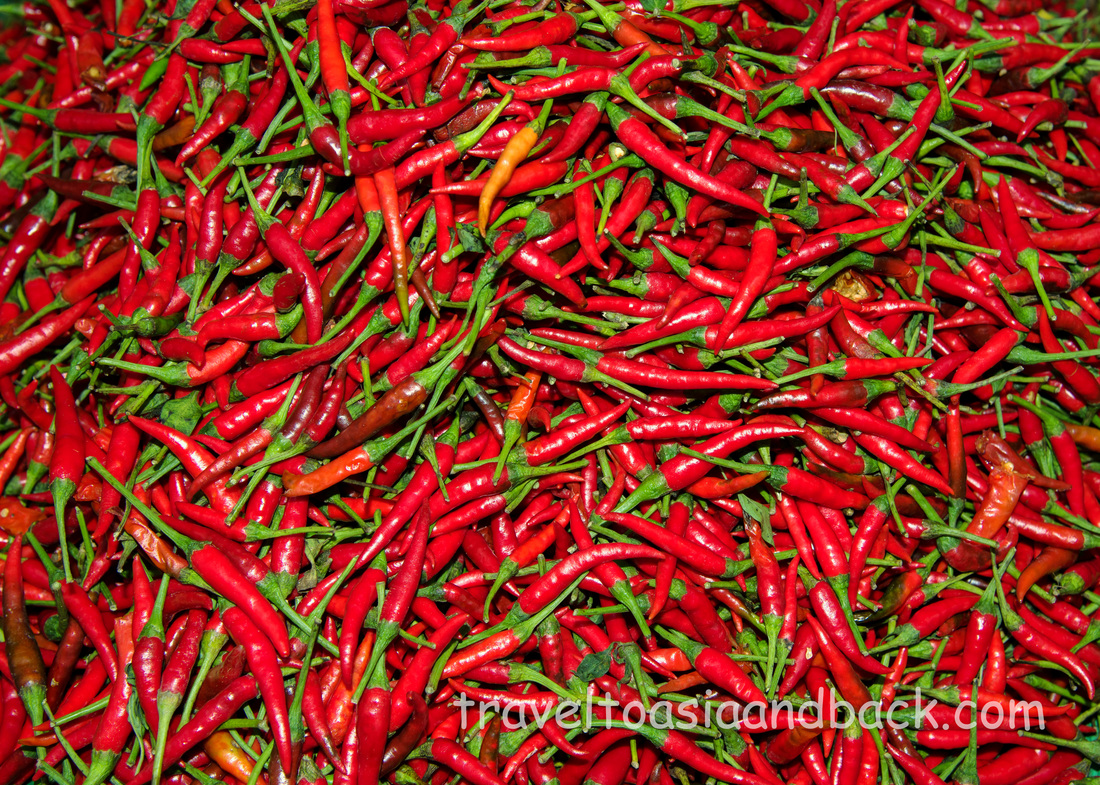
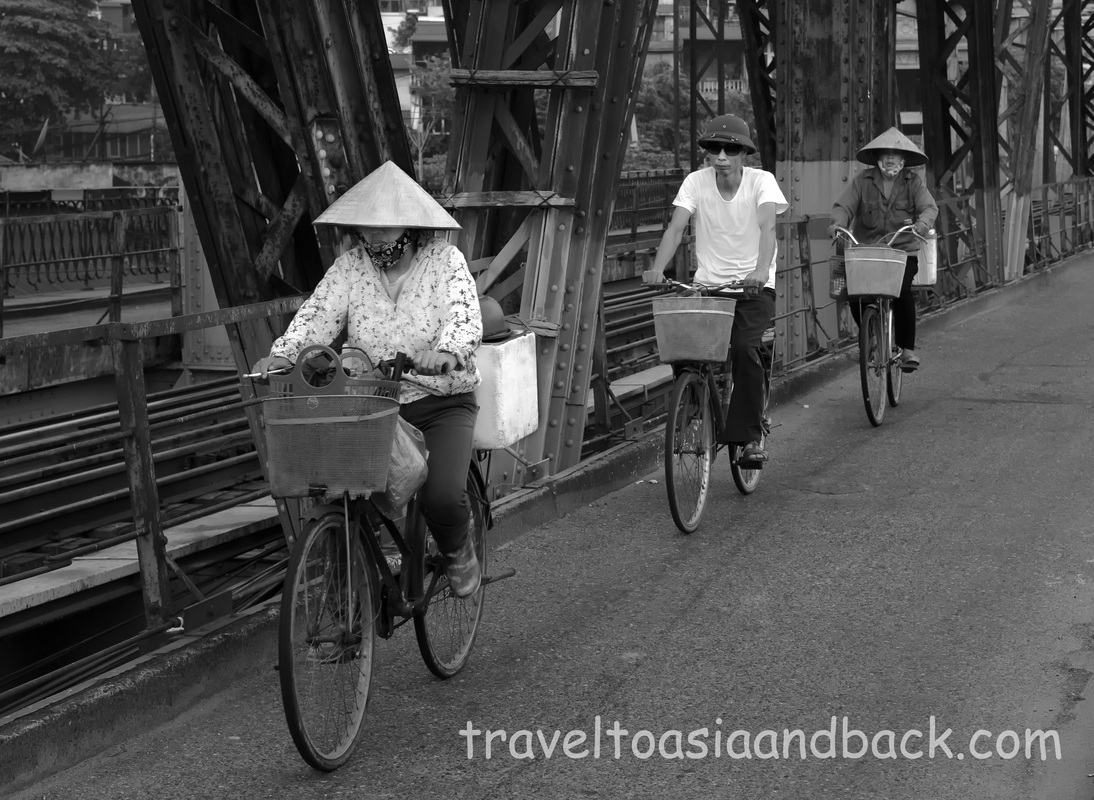
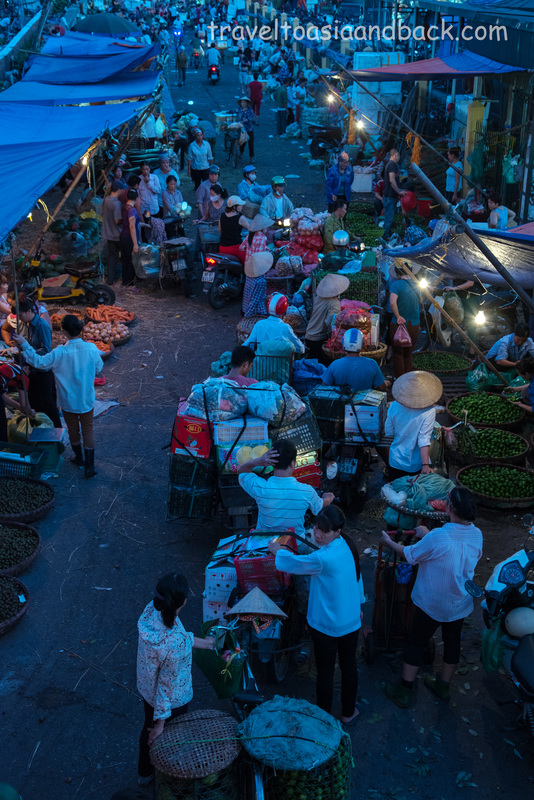
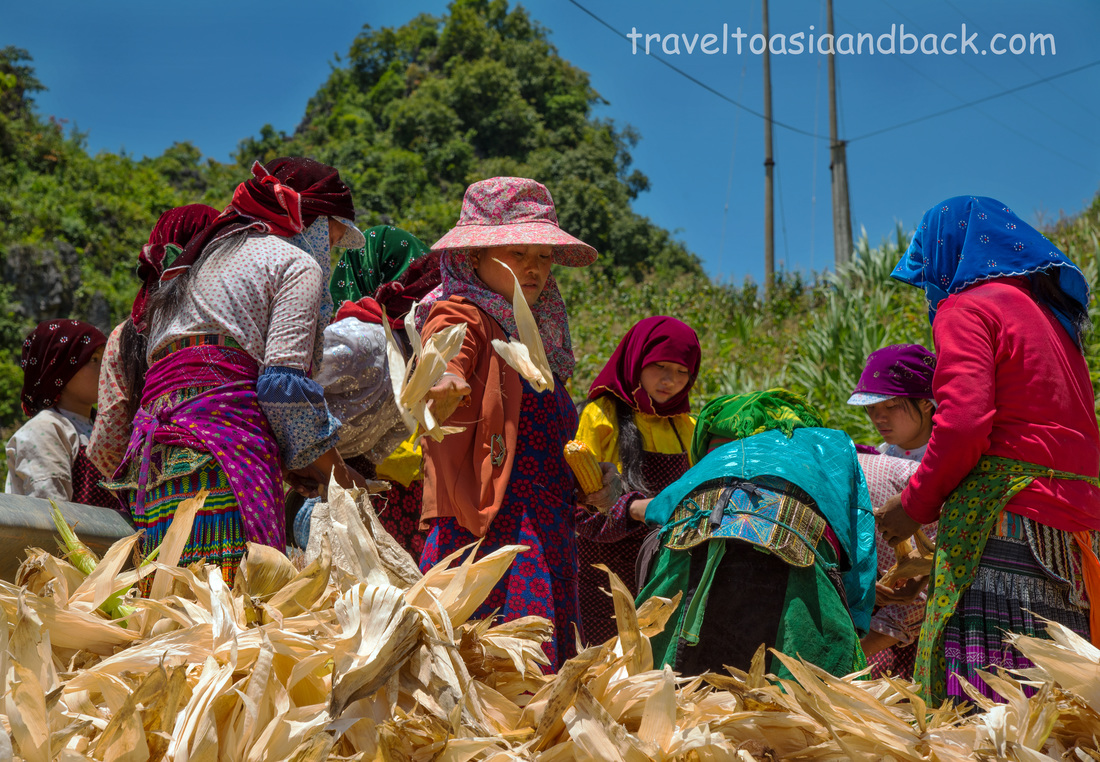
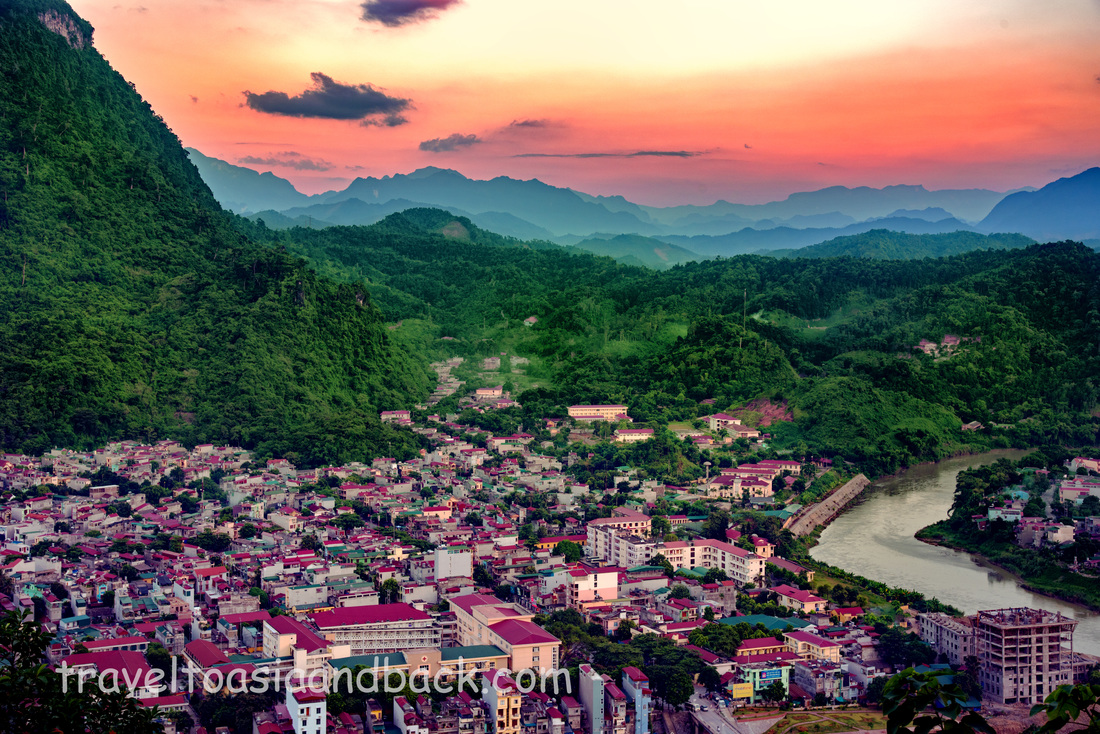
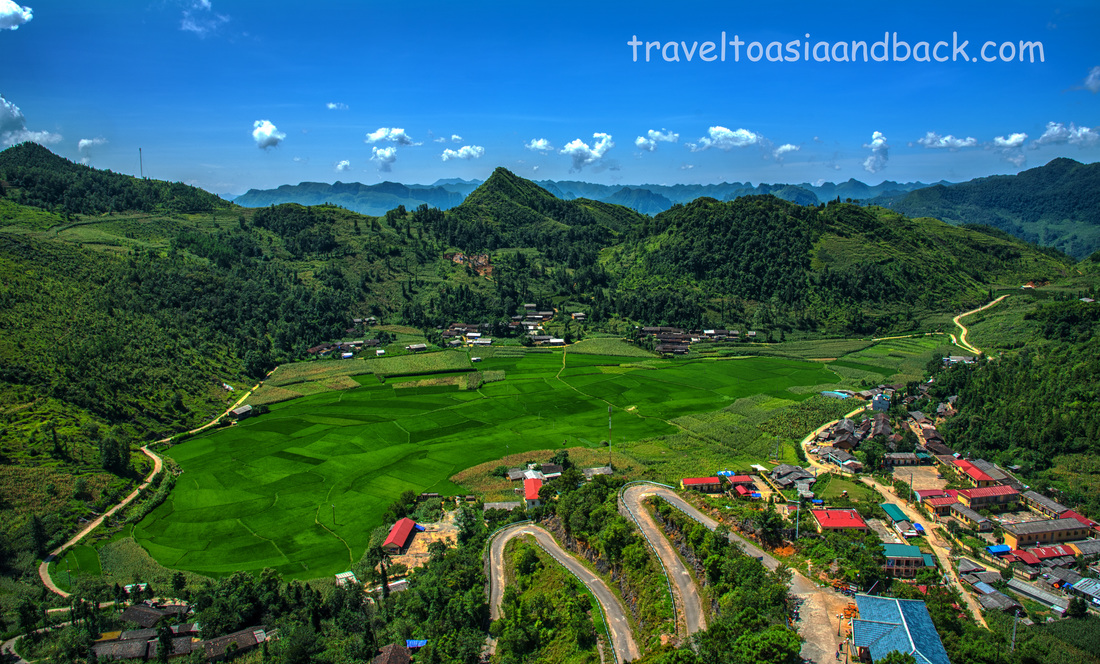
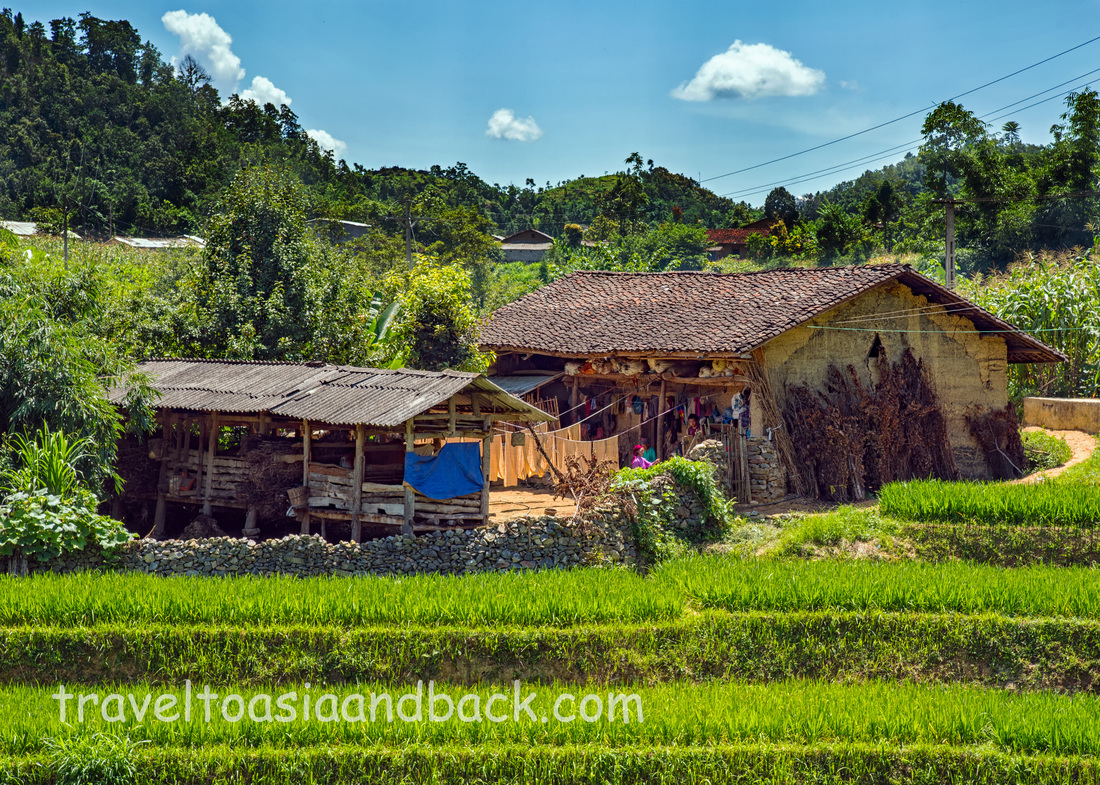
 RSS Feed
RSS Feed
